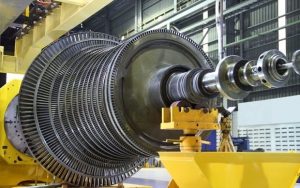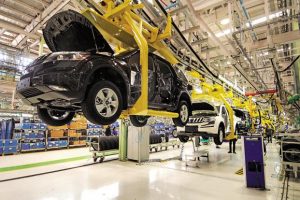I truly believe that most well run companies have exemplary process control. I am also convinced that successful companies will adhere to a quality system that requires established processes. The ISO standards suggest that continuous process improvement is a hallmark of a strong quality management system.
Improvement can be difficult. I know I am a creature of habit and am generally resistant to change. Newtons first law of physics “an object at rest stays at rest unless acted upon by an unbalanced force.” I find that this law also applies to habits.
A stable and proven process should reinforce good habits but, what happens when process control and adherence to process leads to mindless routine and replaces critical thinking? Let’s explore the idea.
At KTM Solutions, one of our niche services is design, evaluation, and approval of heavy lifting devices. Our professional engineers oversee and approve designs.
We do this by assessing each design in compliance with a series of standards which includes a thorough structural and mechanical analysis.
To ensure the correct outcomes, we adhere to our proven systems engineering process and employ industry accepted analysis methods. Our analysis methods often include the use computer simulation models and in-house developed structural analysis templates.
When new engineering joins the KTM Solutions staff, the analyst is not permitted to use our templates or the computer modeling software until they can demonstrate that they understand the calculations and how the system works. As a part of our process, each new simulation model must be validated by hand calculations to ensure that the answers from the software make sense.
It would be easy to simply apply the tools and consider the result acceptable. After all, the templates were developed by smart engineers supported by a robust process. Even so, human error can occur, therefore we require a more thorough, critical review.
What happens when the process is so robust that people trust the system without giving thought to the outcomes?
What happens when the tools require a change to accommodate a new analysis or configuration that doesn’t match the standard? If the system limitations and the physics of the tools are not understood, catastrophic events can occur.
For example, a simple boundary condition error in the computer simulation will yield inaccurate results. Hopefully, the scenario presented above is easy to understand and illustrates the importance of critical thinking in the engineering analysis process.
As we develop the next generation of engineers, what are we teaching them? Are we teaching them to think, or are we teaching them to simply follow a method and process?
Are we teaching students to use tools (like computing simulation software, which is available as a standard add on for mot CAD 3D systems), or do they understand the physics of the design and can they catch when the results don’t make sense? Yes, methods and processes are important.
But genuine critical thinking takes work and is essential. I wonder how many products entering the market today (complex products) are simply developed by stretching he capabilities of an existing product without fully understanding how the overall system works?
This brings up other considerations applicable to manufacturing. When new tools or production systems are required, who is developing those tools and systems? Is it someone who follows a prescribed “cookbook” without using critical thinking and understanding how the system works?
How can you have assurance that any system has been appropriately designed and that the necessary critical analysis and thinking was completed?
For example, are you using a lifting system that was developed by someone who simply decided “the last system we owned was capable of lifting 10 tons, to get to 12 tons, let’s just add 20% more material … it should be good?” Although on the surface, this seems logical, but this is a bad assumption and could have catastrophic results. You need to know that those making decisions and influencing the outcomes are qualified. Those making assessments need to understand how the system works.
Our thinking at KTM is “the processes should work for us, not that we should work for the process.” We encourage critical thinking. Use the process as a tool to achieve a repeatable outcome, but do not let the process trump critical thinking.
 Paul V. Kumler, P.E. is president of KTM Solutions, an engineering company that services the aerospace and large-scale manufacturing industries. In addition to aero structures engineering services, KTM Solutions designs and builds tooling supporting a broad clientele and various industries. www.ktmmechanical.com The company is headquartered in Greer, South Carolina with remote offices in Charleston, South Carolina. Mr. Kumler serves in several volunteer roles including the SC Aerospace Advisory Board. Mr. Kumler, a professional engineer, is licensed in Louisiana, South Carolina, Texas and Washington. He is married to Ginger A. Kumler. Together, they have two grown children and two grandchildren.
Paul V. Kumler, P.E. is president of KTM Solutions, an engineering company that services the aerospace and large-scale manufacturing industries. In addition to aero structures engineering services, KTM Solutions designs and builds tooling supporting a broad clientele and various industries. www.ktmmechanical.com The company is headquartered in Greer, South Carolina with remote offices in Charleston, South Carolina. Mr. Kumler serves in several volunteer roles including the SC Aerospace Advisory Board. Mr. Kumler, a professional engineer, is licensed in Louisiana, South Carolina, Texas and Washington. He is married to Ginger A. Kumler. Together, they have two grown children and two grandchildren.






Be the first to comment on "When Processes Replace Critical Thinking"